Sale 2607 - Lot 186
Additional Images
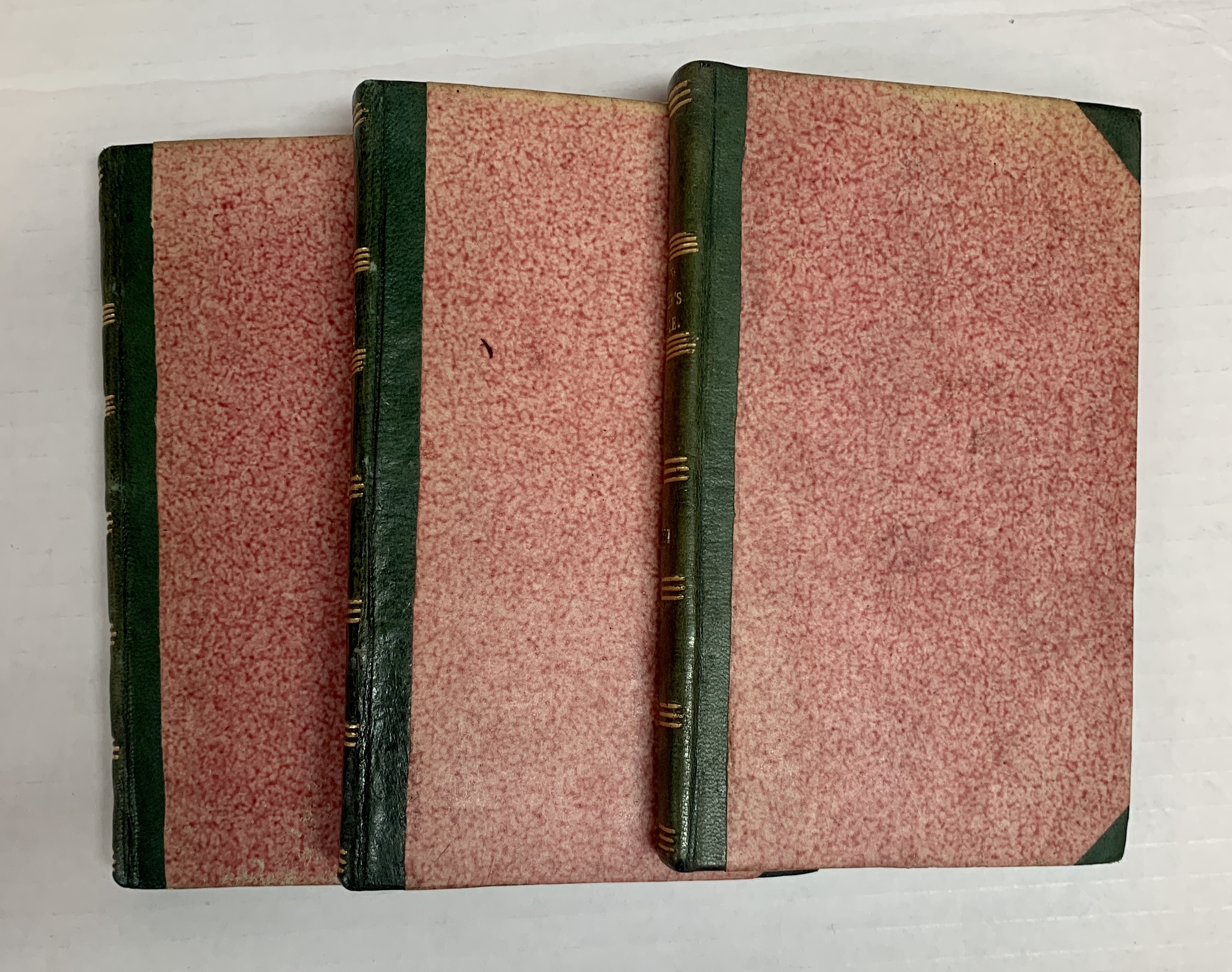
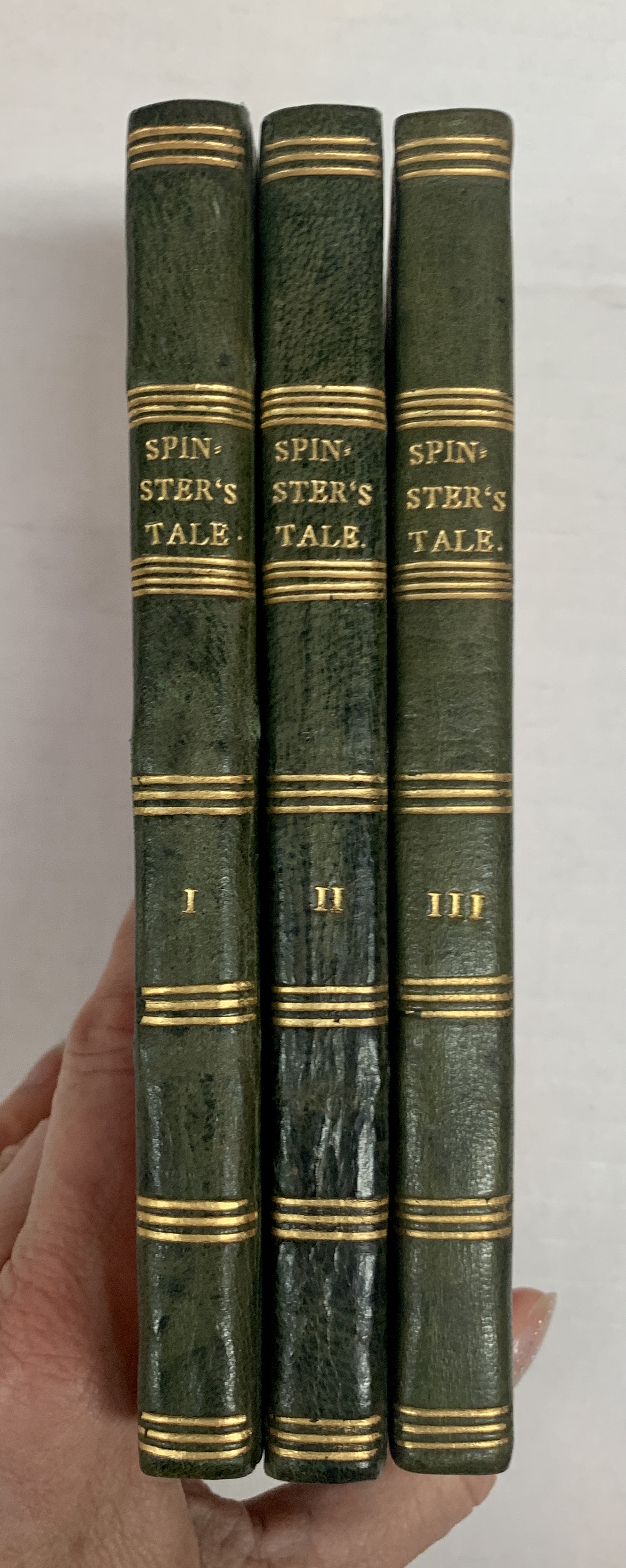
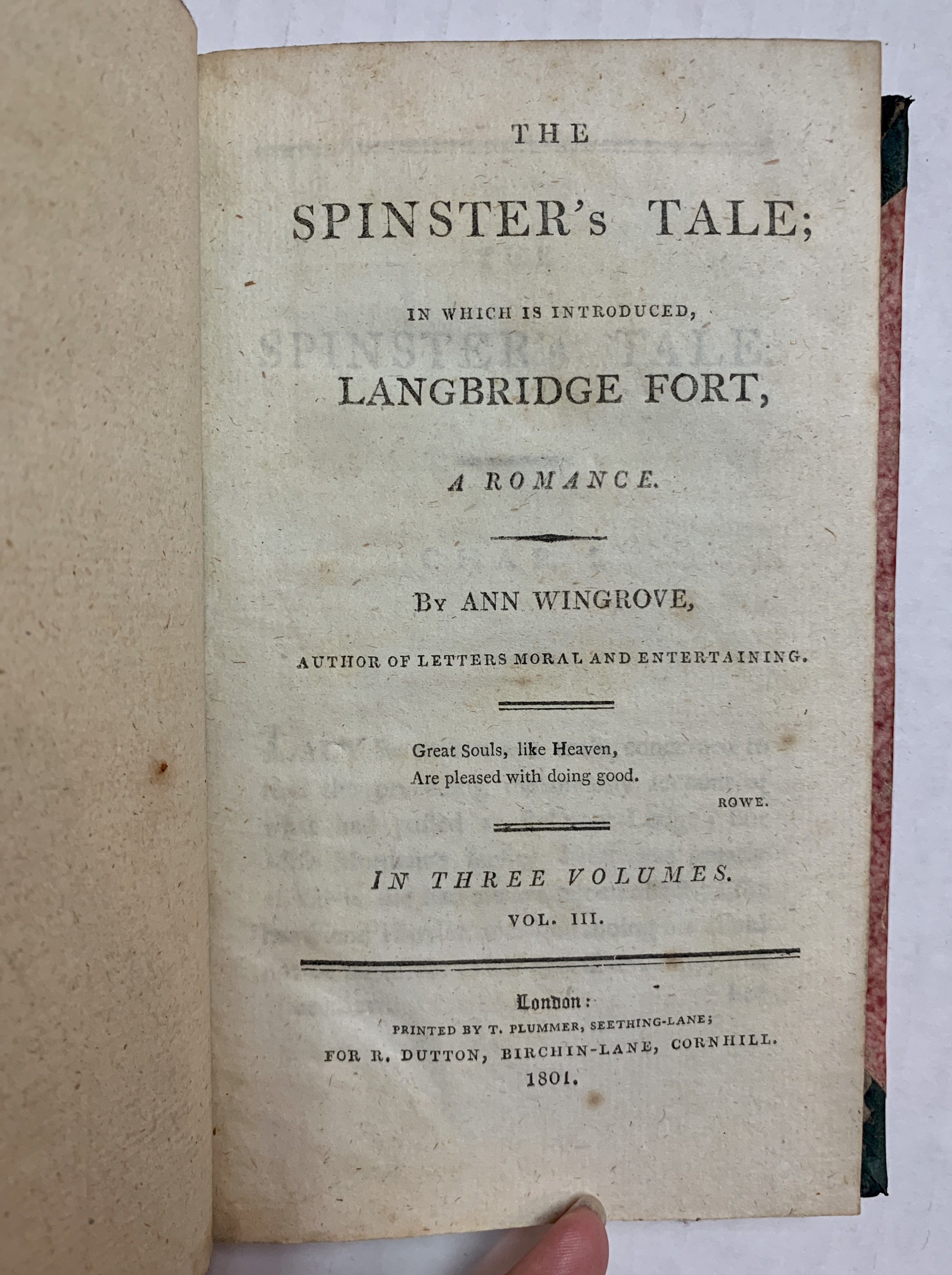
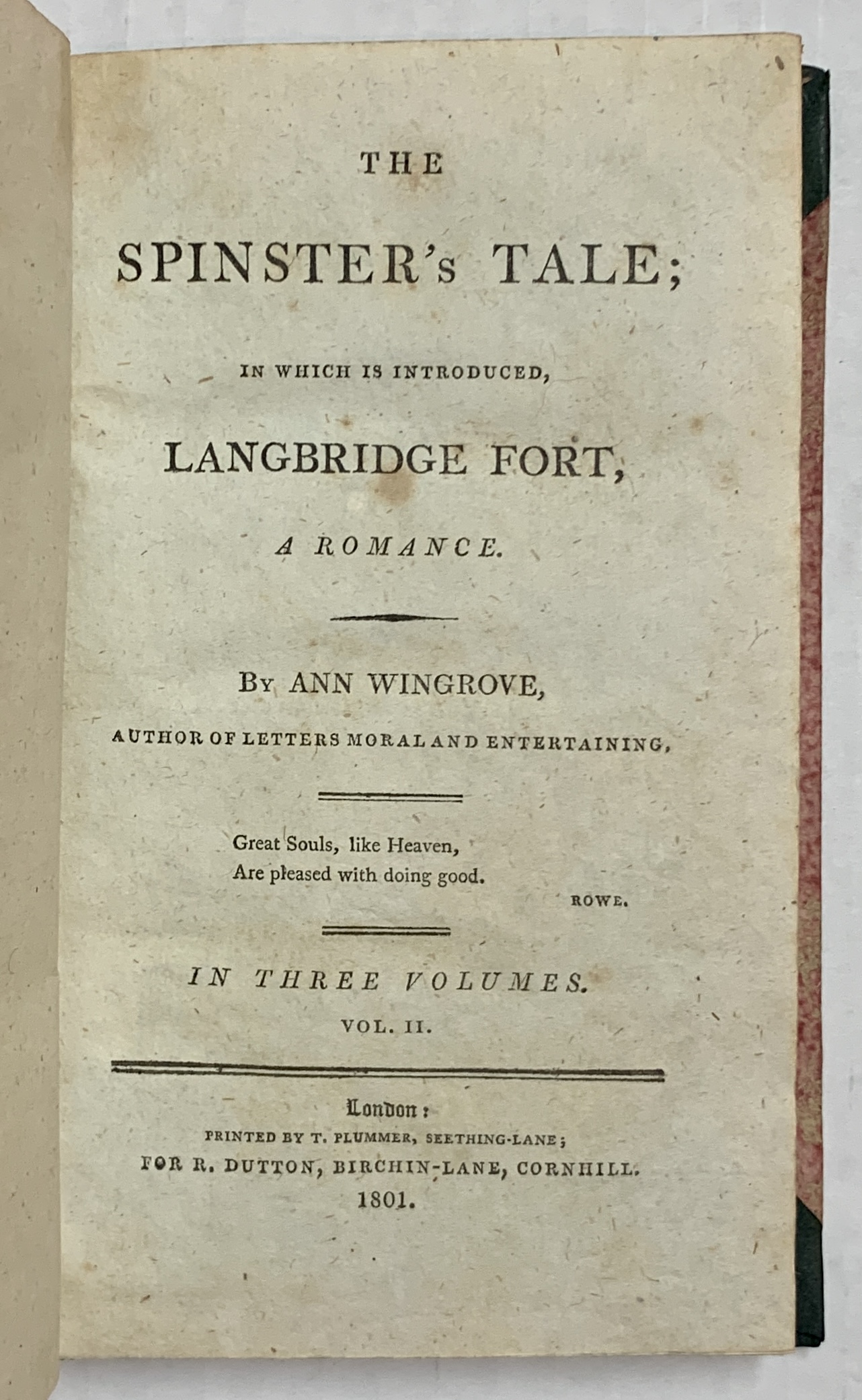
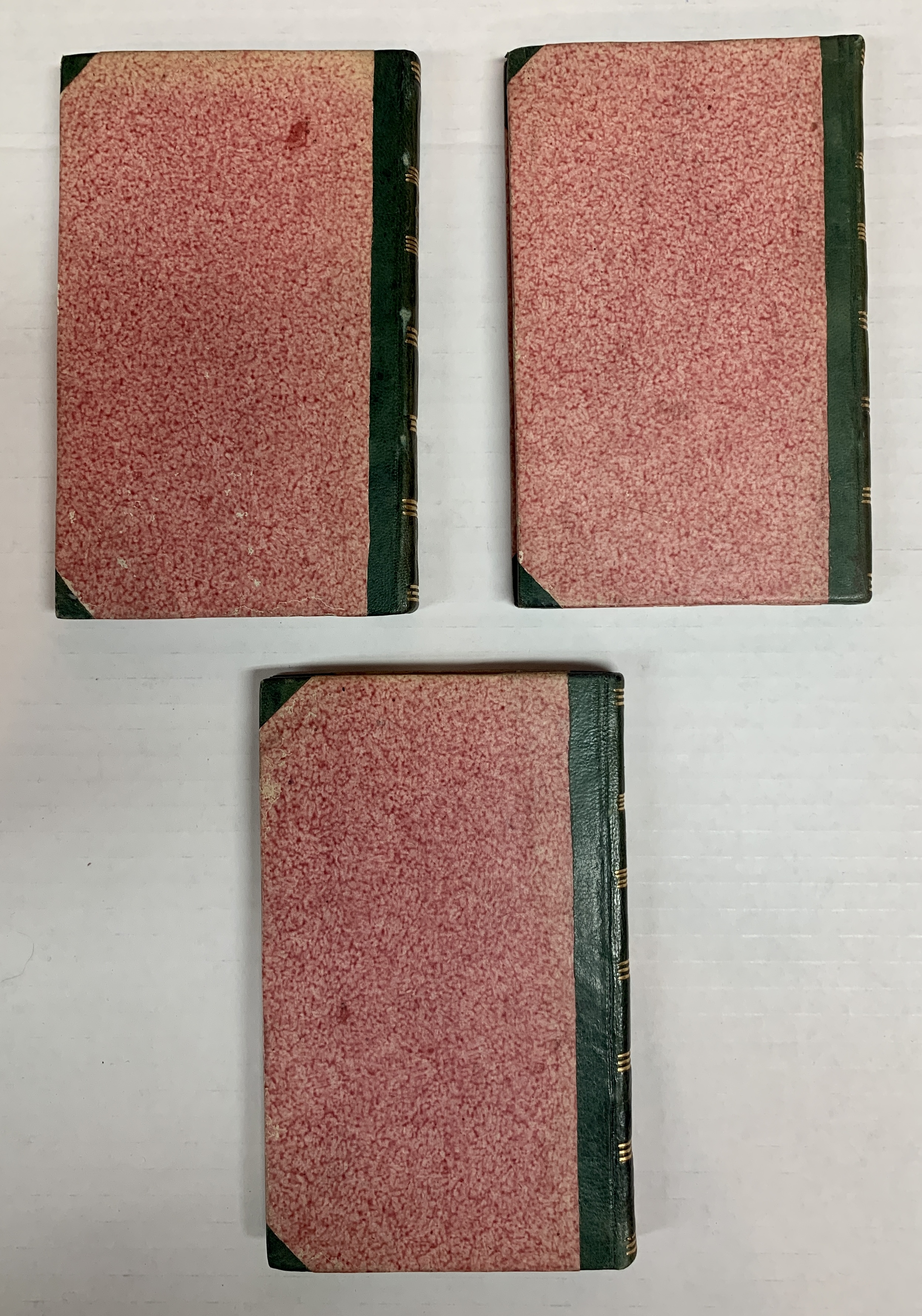
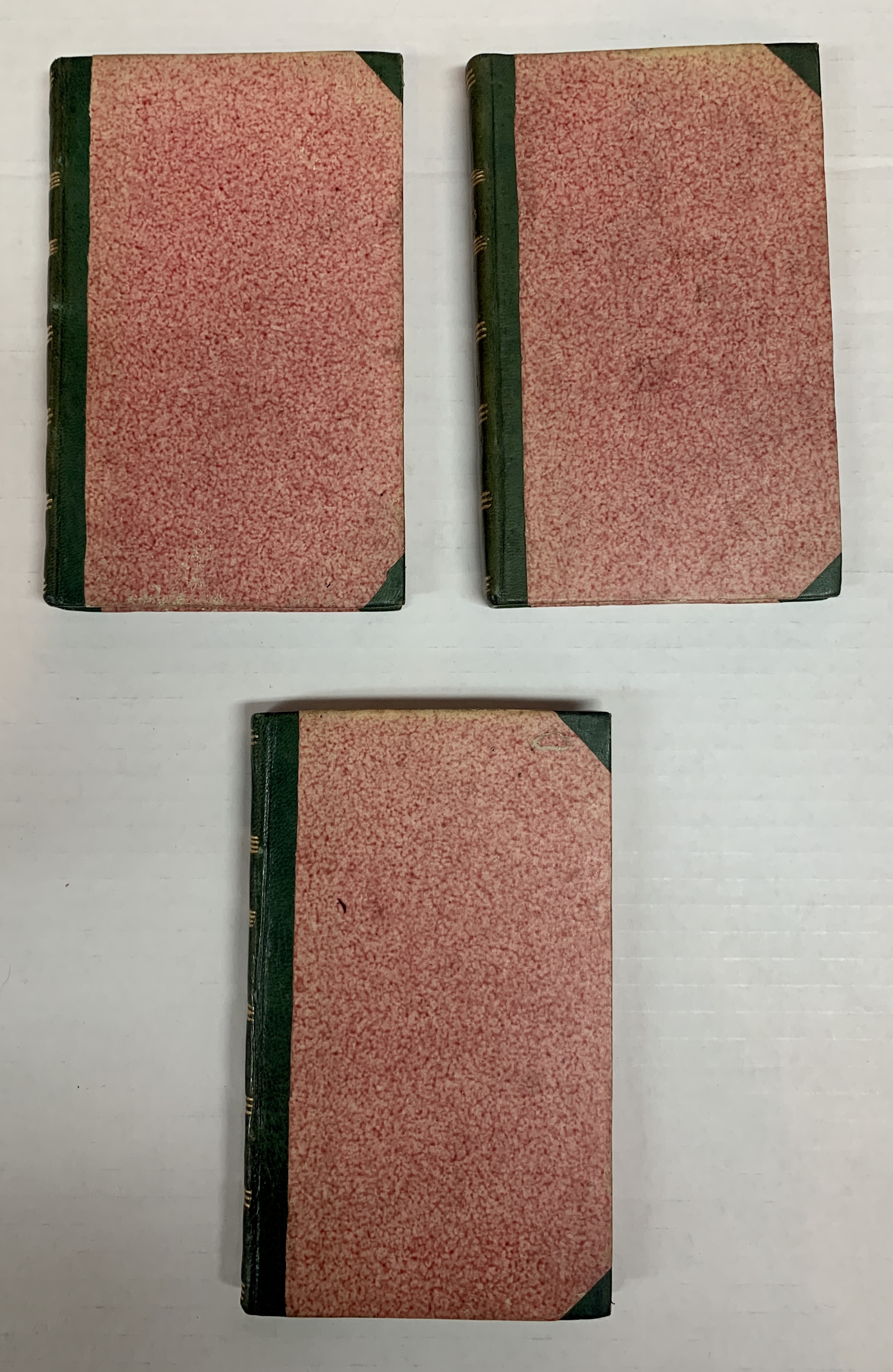
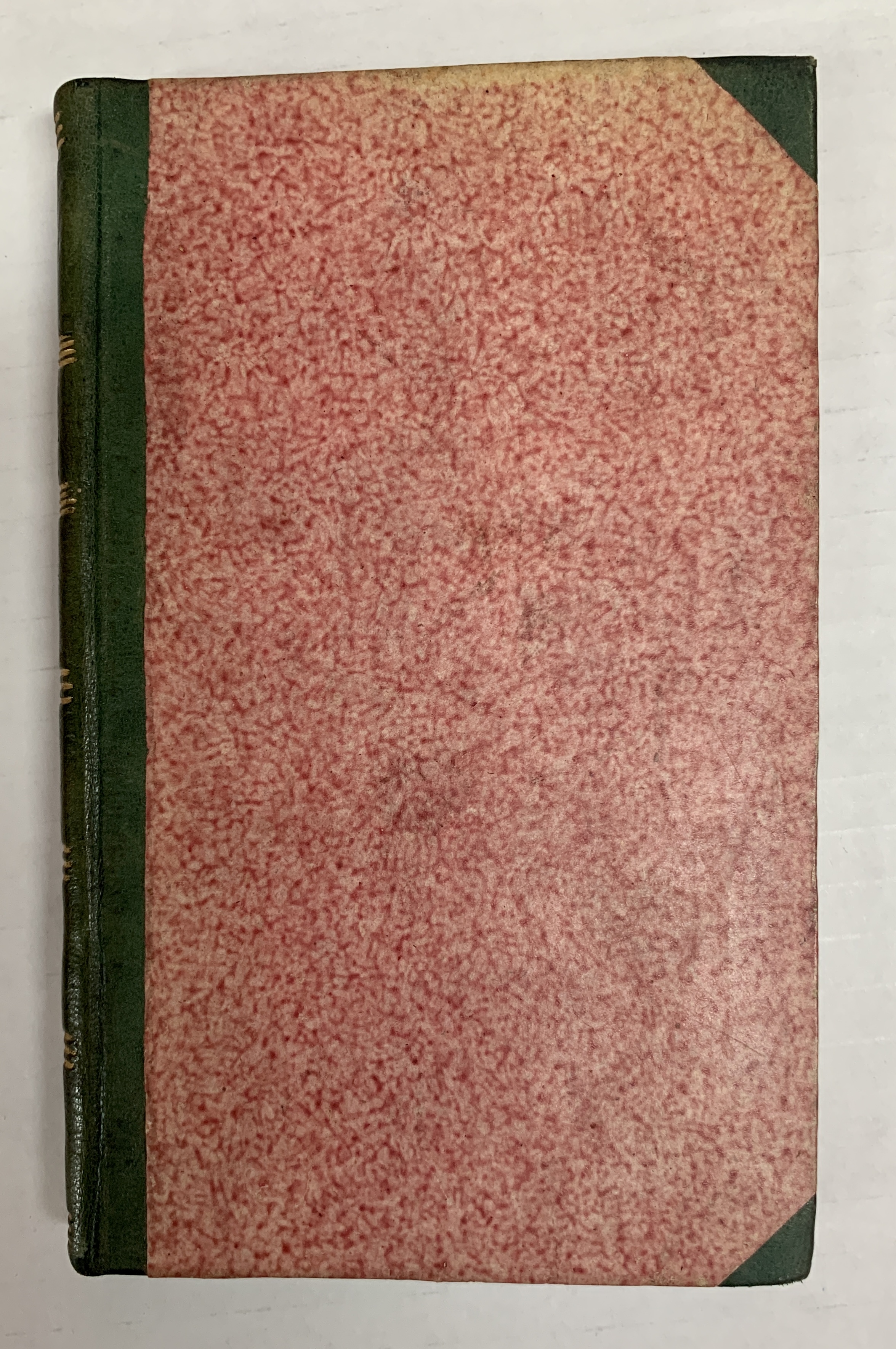
7







Sale 2607 - Lot 186
Estimate: $ 1,000 - $ 1,500
Wingrove, Ann (fl. circa 1800)
The Spinster's Tale; in which is Introduced, Langbridge Fort, a Romance.
London: by T. Plummer for R. Dutton, 1801.
First edition, three 12mo volumes, bound in very well preserved contemporary half green sheepskin with pink paste-paper boards, contents similarly good, 6 3/4 x 3 7/8 in.
This very rare three volume epistolary novel, written by an author upon whom information is scant. Wingrove, who seems to have lived in the town of Bath, only published one other title, Letters Moral and Entertaining, in 1795, (found in three British libraries only). The Spinster's Tale, according to Worldcat, is held at only one location worldwide: the British Library. As was the case with novels written by and for women in this period, the author's motivation is to promote moral and virtuous behavior in the target audience. In the opening pages, Wingrove credits Prudentia Homespun, the pen name of Jane Iliffe West (1758-1852), as her inspiration for the current tale.
"Being a great admirer of the writings of my sister authoress, Prudentia Homespun, I have adopted her title, and though my tale may be inferior to that lady's yet I think we are actuated by the same animating principle; for if we can persuade one reader to avoid or quit the paths of vice, or confirm another in the practice of virtue, we have not been useless members of society."
West published several similar works during the same period, including Letters to a Young Lady, a conservative response to Wollstonecraft, and A Gossip's Story, Jane Austen's source text for Sense and Sensibility.
The Spinster's Tale; in which is Introduced, Langbridge Fort, a Romance.
London: by T. Plummer for R. Dutton, 1801.
First edition, three 12mo volumes, bound in very well preserved contemporary half green sheepskin with pink paste-paper boards, contents similarly good, 6 3/4 x 3 7/8 in.
This very rare three volume epistolary novel, written by an author upon whom information is scant. Wingrove, who seems to have lived in the town of Bath, only published one other title, Letters Moral and Entertaining, in 1795, (found in three British libraries only). The Spinster's Tale, according to Worldcat, is held at only one location worldwide: the British Library. As was the case with novels written by and for women in this period, the author's motivation is to promote moral and virtuous behavior in the target audience. In the opening pages, Wingrove credits Prudentia Homespun, the pen name of Jane Iliffe West (1758-1852), as her inspiration for the current tale.
"Being a great admirer of the writings of my sister authoress, Prudentia Homespun, I have adopted her title, and though my tale may be inferior to that lady's yet I think we are actuated by the same animating principle; for if we can persuade one reader to avoid or quit the paths of vice, or confirm another in the practice of virtue, we have not been useless members of society."
West published several similar works during the same period, including Letters to a Young Lady, a conservative response to Wollstonecraft, and A Gossip's Story, Jane Austen's source text for Sense and Sensibility.





